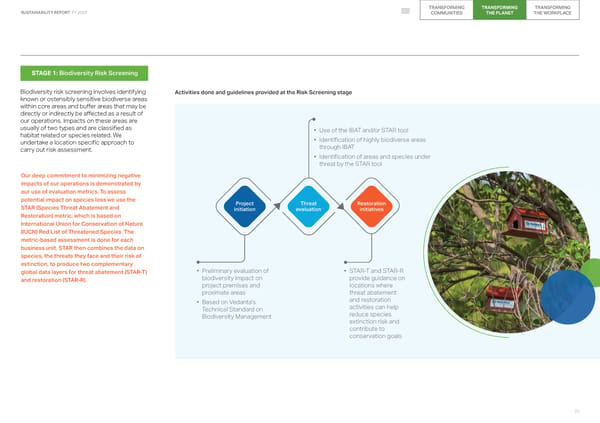TRANSFORMING TRANSFORMING TRANSFORMING SUSTAINABILITY REPORT FY 2023 COMMUNITIES THE PLANET THE WORKPLACE STAGE 1: Biodiversity Risk Screening Biodiversity risk screening involves identifying Activities done and guidelines provided at the Risk Screening stage known or ostensibly sensitive biodiverse areas within core areas and buffer areas that may be directly or indirectly be affected as a result of our operations. Impacts on these areas are usually of two types and are classified as • Use of the IBAT and/or STAR tool habitat related or species related. We • Identification of highly biodiverse areas undertake a location specific approach to through IBAT carry out risk assessment. • Identification of areas and species under threat by the STAR tool Our deep commitment to minimizing negative impacts of our operations is demonstrated by our use of evaluation metrics. To assess potential impact on species loss we use the Project Threat Restoration STAR (Species Threat Abatement and initiation evaluation initiatives Restoration) metric, which is based on International Union for Conservation of Nature (IUCN) Red List of Threatened Species. The metric-based assessment is done for each business unit. STAR then combines the data on species, the threats they face and their risk of extinction, to produce two complementary global data layers for threat abatement (STAR-T) • Preliminary evaluation of • STAR-T and STAR-R and restoration (STAR-R). biodiversity impact on provide guidance on project premises and locations where proximate areas threat abatement • Based on Vedanta's and restoration Technical Standard on activities can help reduce species Biodiversity Management extinction risk and contribute to conservation goals 77
 2023 ESG Report Page 76 Page 78
2023 ESG Report Page 76 Page 78